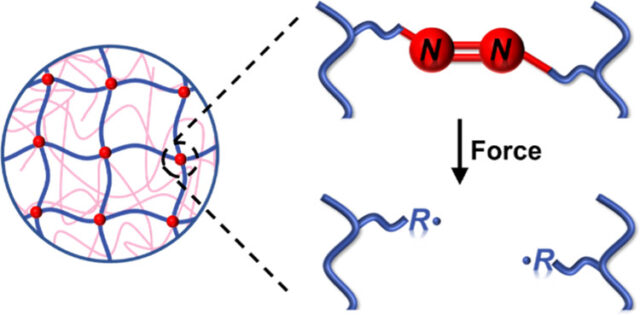Researchers at ICReDD and Hokkaido University led by Prof. Jian Ping Gong have utilized an azoalkane crosslinker (AAC) molecule in double network hydrogels that resulted in 5 times greater mechanoradical generation when compared to a conventional crosslinker molecule. This increase in mechanoradicals led to accelerated polymer growth that resulted in an increase in hydrogel strength. This finding broadens the potential scope of applications for such “force-responsive” hydrogels in fields such as biomedical devices and soft robotics.
This work compared the standard crosslinker molecule N,N’-methylenebis(acrylamide) (MBA) with AAC. Computational analysis using the Artificial Force Induced Reaction (AFIR) method, developed by ICReDD Director Satoshi Maeda, showed that bonds in AAC could be broken in a more energy efficient manner, and this was confirmed experimentally. Additionally, tensile strength tests coupled with Fenton color reactions were utilized to demonstrate the increased mechanoradical generation experimentally.
Details can be found in the full paper linked below.
 Schematic showing the generation of two mechanoradicals via the breaking of a bond in the crosslinker molecule in a hydrogel’s structural network.
Schematic showing the generation of two mechanoradicals via the breaking of a bond in the crosslinker molecule in a hydrogel’s structural network.

